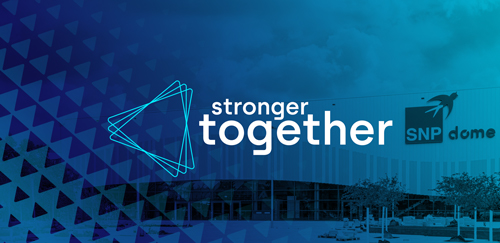Navigating SAP transformations in regulated industries: pharma and life sciences
In thig blog post, we delve into transforming SAP landscapes in the pharmaceutical industry. With vast amounts of sensitive data and strict regulations, this is an especially challenging task that calls for a deep understanding of compliance requirements and the expertise to navigate it effectively.
Share
Regulatory frameworks in the pharmaceutical industry
Implementing SAP at companies requiring U.S. FDA (Food and Drug Administration) approval involves rigorous compliance with regulatory standards and requirements. This compliance relates to Part 11 of Title 21 of the CFR (Code of Federal Regulations). The EU equivalent is GMP (Good Manufacturing Practice) Annex 11. Both publications provide guidance to companies that use IT systems to create, modify, maintain, archive, retrieve, or transmit electronic records subject to regulations. Pharmaceutical, biotechnology, and medical device companies all must comply. While the two publications differ with respect to the depth and specificity of their regulatory demands, they are similar enough for the following content to apply to both.
Challenges in data management
Pharmaceutical companies handle vast amounts of data in various forms, including research and development, clinical trials, manufacturing, sales and marketing, shipment tracking, regulatory compliance, quality control, chemical formations, genomics research, drug interactions, and patient information. This is in addition to historical information and other back-office transactional data related to finance, human resources, and purchasing. A single large pharmaceutical company can generate terabytes of data every day. The adoption and ongoing expansion and optimization of ERP applications such as SAP was unavoidable for the industry given the increases in process complexity, data and analytics requirements, and regulatory demands in the face of ever-growing competition.
SAP was intended to solve the historical siloed data problem in the industry, which it initially did from a process integration perspective. However, as pharmaceutical companies have grown via acquisitions or joint ventures, business-unit silos have emerged, which limits the acquisition of organization-wide insights and casts doubt upon the vital “single source of truth.” Now with the onset of digital transformation, establishing the clean-core foundation required for operational resiliency and data-driven decision-making has been difficult for those companies running multiple disparate SAP systems.
Requirements for implementing SAP in the pharmaceutical industry
The following are examples (not the complete list) of the requirements for implementing or migrating SAP in a technical environment that must adhere to Annex 11 or 21 CFR 11:
- Regulatory compliance assessment: Make sure you understand the rules and requirements and add them to your scope checklist.
- Validation documentation: Make sure that validation documentation such as functional specs, technical specs, user requirement specs, and performance qualifications meet all requirements.
- Data integrity and security: Implement robust measures to ensure that data is accurate, reliable, and protected. This includes audit trails and access controls.
- Change control procedures: Document, review, and validate all changes to ensure they do not adversely affect compliance.
- Post-implementation support: Provide continuous support and monitoring of the SAP system after implementation to ensure that it continues to meet requirements over time. Government regulators frequently suggest that consultants and/or systems integrators with Annex 11 or 21 CFR 11 experience be utilized to ensure compliance.
SNP has supported 30+ pharma companies in their SAP transformation programs
What do Medtronic, Swiss Medical, Bionorica and Inventia have in common? They and 30+ other pharma and life sciences companies around the world selected SNP to support their SAP transformation programs. Our experience in the sector extends beyond SAP ECC, covering S/4HANA, IS-Healthcare, IS-Life Sciences, Public Sector Collections and Disbursements, QM, CRM, SRM, and other critical functions. Our experience also includes compliantly restructuring and consolidating cost center and profit center hierarchies, as well as merging separate SAP systems and harmonizing data.
A specific example is Jungbunzlauer Suisse AG, where SNP helped kick off a global digitalization program. In one go-live using BLUEFIELD SNP performed a selective data migration from SAP ECC 6.0 EHP 8 to S/4HANA 1605 that included pre-projects such as the conversion to the New General Ledger. SNP quickly responded to changing business and technical requirements to help Jungbunzlauer establish their new digital core supporting operations in Switzerland, Canada, Austria, France, the USA, Mexico, the Netherlands, Spain, India, and Japan.
Why has SNP been selected to migrate and transform the SAP data of so many clients in the sector? Because we have the experience and the tools necessary to support the regulatory, auditability, and data security requirements of Annex 11 and 21 CFR 11 (subject to the client’s final audit and sign-off). Here are some examples of how CrystalBridge, our transformation software platform, can support industry participants looking to digitalize their SAP systems:
- Data consistency verification ensures the referential integrity of the data by making sure that only values existing in check tables or defined as fixed values at the domain level are present in the database.
- Technical validation enables regression testing at the table level and allows for a full reconciliation of the data content.
- Execution verification compares the number of records exported with the number of records imported at the table level.
- Mass automated testing checks selected objects by opening them within the corresponding display or change transaction in the background.
- Data masking and scrambling capabilities ensure that PI, PHI, and sensitive corporate data is not exposed during the project lifecycle.
- A dedicated team with 20+ years of experience implementing and operating application lifecycle management (ALM) solutions and platforms (SAP Solution Manager, SAP Cloud ALM), as well as the integration of other third-party tools.
The ultimate responsibility for regulatory compliance rests with each organization. Given the high cost of non-compliance, it is a good idea to work with partners who have the experience and capabilities to help navigate the complexities when it comes to SAP S/4HANA migrations, mergers, divestitures, archiving, system decommissioning, and cloud moves.
Read how SNP helped other ogranizations with their SAP transformations

